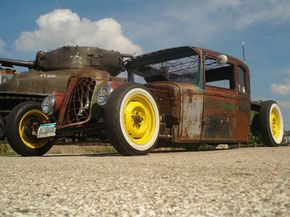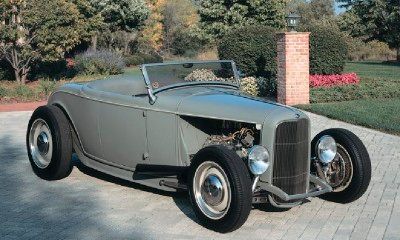Classic car enthusiasts love their buffed, shined, chromed beauties. Across the United States, pristine examples of automotive history roll off auction blocks with sales prices of five, six or even seven figures, each part lovingly restored to better-than-new condition, or replaced with flawless replica items cut from expensive billets of aluminum alloy. Go to any cruise night or car show and you'll find row upon row of these flashy cars from the '50s, '60s and '70s.
Advertisement
However, if you look around a little you might find a few rows of cars that look decidedly different. No chrome. Sometimes no paint, and if there is paint, it's usually primer black or gray. Bodies liberally marked by rust, mismatched parts, dents and dings or even bullet holes. Look closely and you won't find original dealer sheets or matching serial numbers -- instead, you might notice that the car was cobbled together from the corpses of half a dozen vehicles, and part of it might have been built entirely from scratch. These are the rat rods.
Standing next to the rat rods are the rat rodders, the guys and girls that love their tarnished treasures, and they even have a certain amount of disdain for the "trailer queens" gleaming in the next row. Rat rodders build their cars to be fast and loud and cool, and while they're a diverse bunch, you're likely to see most of them sporting slicked-down hair, blue jeans and black leather jackets. As you'll learn over the next few pages, rat rodding is about more than just the cars and trucks -- it's also a lifestyle.
In this article, we're going to scrape away the primer and rust and find out what makes these machines (and their proud owners) tick.

